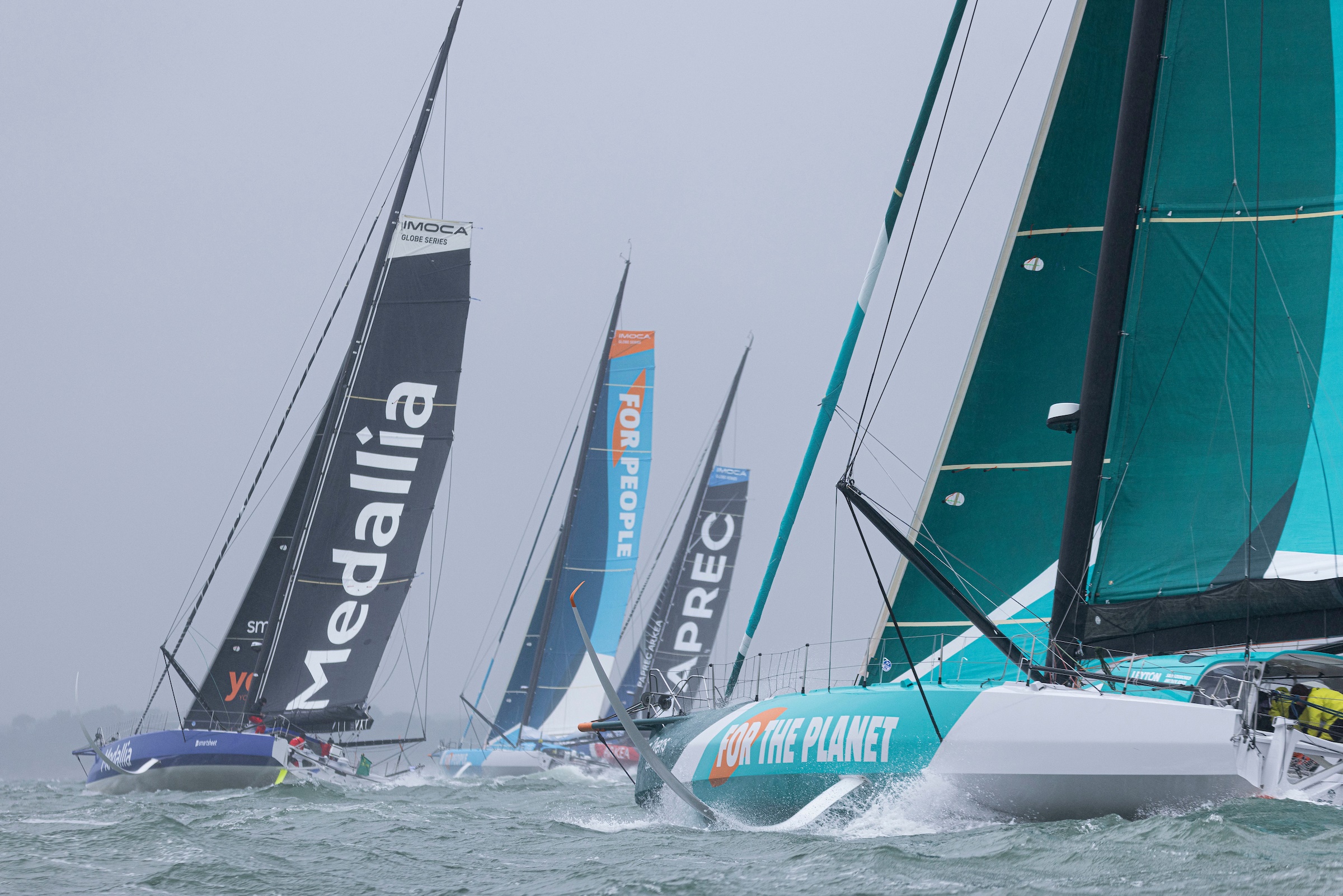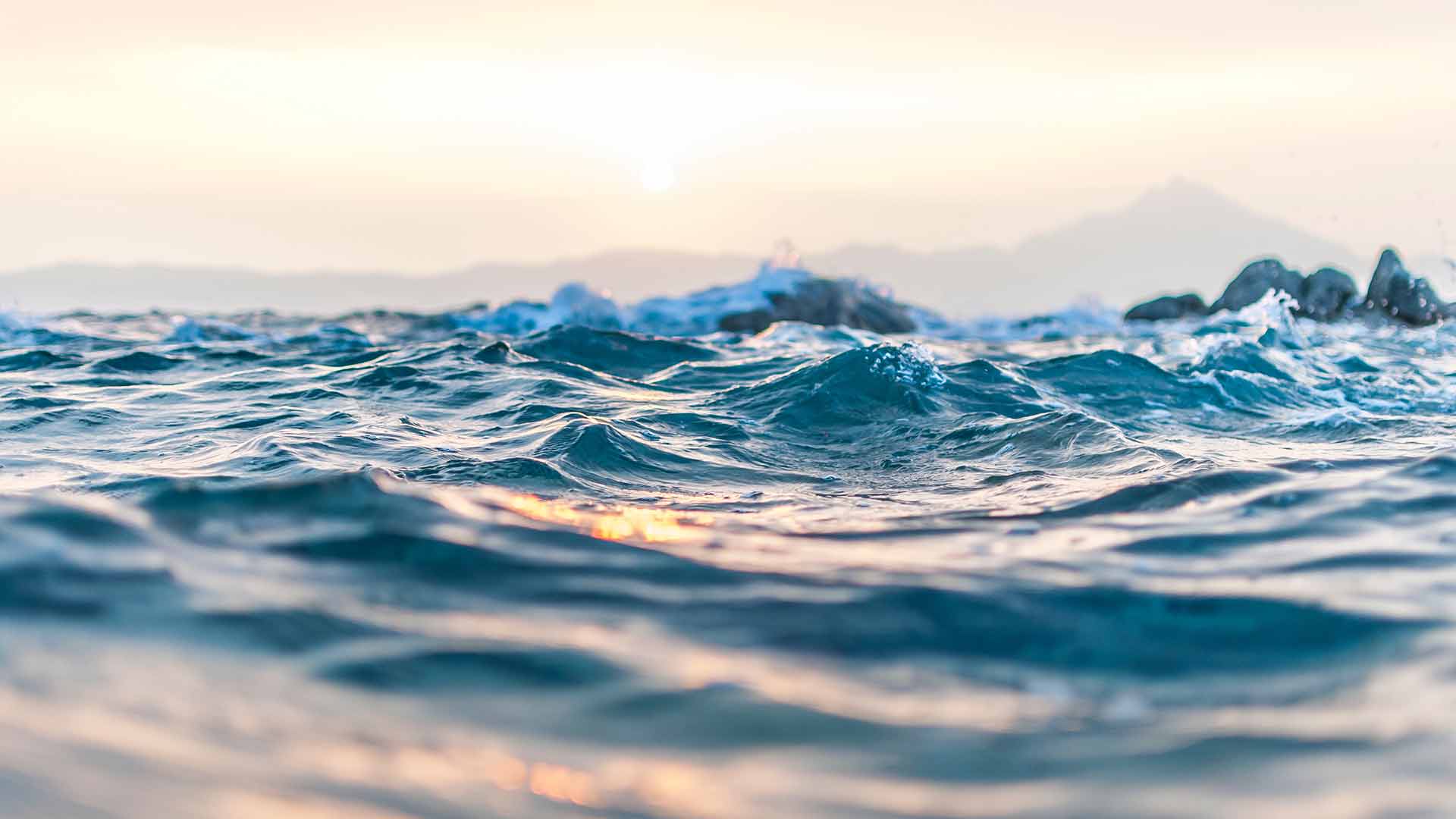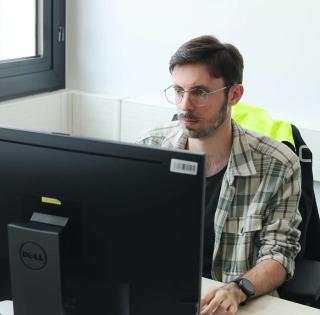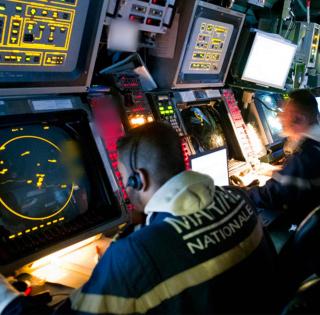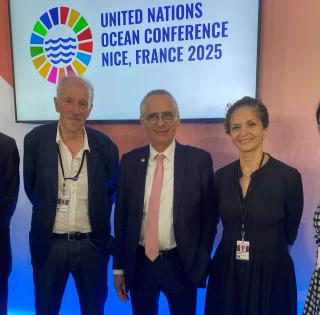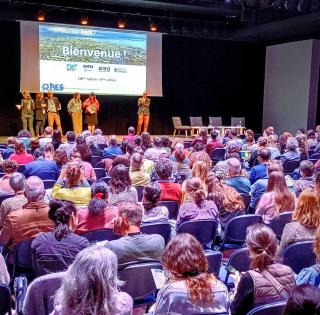
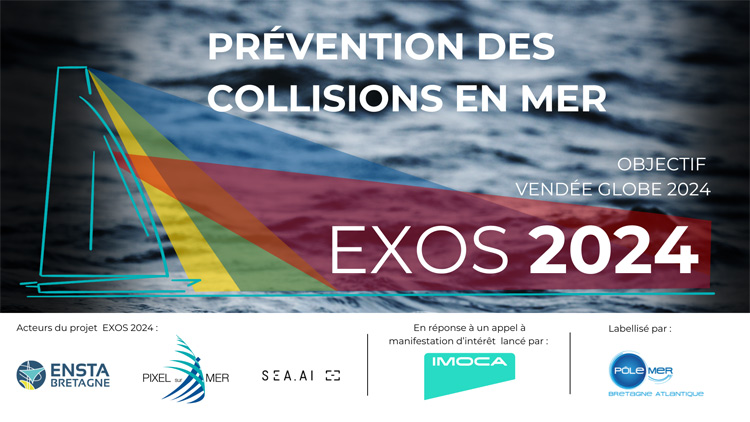
Called "EXOS 2024", this innovative collaborative R&D project was launched in response to an expression of interest from the IMOCA class organised by the Pole Mer Bretagne Atlantique to tackle the problem of collisions at sea. The development of this innovation, which will be able to detect obstacles and avoid them automatically, will be based on the latest technological advances in such diverse fields as Machine Vision (or artificial vision), multi-sensor fusion and automatic piloting. This solution will be compatible with most navigation systems already installed on board.
Recognised for its role as a laboratory for innovation, the IMOCA class will be the support and catalyst for this project, whose aims are of interest far beyond ocean racing. As a leading class in the search for solutions to avoid collisions at sea, the IMOCA class is fully committed to this collaborative project alongside PIXEL sur MER and SEA.AI.
In line with their commitment to innovation and the development of the maritime industry, the Brittany Region and BPI France are providing financial support for the development of this new solution.
BOOSTING SEA.AI’s ARTIFICIAL INTELLIGENCE FOR ENHANCED OPTICAL & THERMAL SURVEILLANCE
SEA.AI’s new technology combines optical and thermal sensors with artificial intelligence to detect all floating objects, day or night, including those that are not detected by radar or AIS. SEA.AI's artificial intelligence is based on algorithms and learning models that need to be trained on large quantities of annotated maritime images in order to identify and classify the objects detected.
EXOS 2024 will help to diversify this database and enhance the analysis capabilities of this new automatic maritime surveillance system. The fusion of information with other sensors will also improve the accuracy and detection performance of this new technology.
DATA FUSION - THE KEY TO SUCCESSFUL AVOIDANCE
Today, the wide range of sensors onboard a boats deliver information that is crucial to the crews for their performance and safety at sea: speed, positioning, the external environment, etc. But to exploit the full potential of these sensors, there is a real challenge in the fusion of this data. The aim is to provide more accurate and reliable information, by combining and exploiting the complementary nature of the data from each sensor.
PIXEL sur MER fulfils this essential role by merging data from SEA.AI and various existing obstacle detection technologies, such as radar and AIS.
The idea is also to create a technology that can be updated to incorporate new detection systems that may appear in the future, particularly for underwater detection. This data fusion technology operated by PIXEL on MER is of key importance for the creation of an effective automatic avoidance system.
FROM THE CALCULATION OF AVOIDANCE TRAJECTORIES TO AUTOMATIC AVOIDANCE
PIXEL sur MER and ENSTA Bretagne will be joining forces to develop advanced algorithms that will enable collision avoidance trajectories to be calculated quickly and accurately, giving the crew an instant and safe response to imminent collision situations. The solution is being developed in collaboration with the ROBEX research team, which is specialised in autonomous robotics for marine exploration. It will make navigation safer by automatically changing the boat's direction as soon as an obstacle is detected.
The consortium's aim is to develop a technology that can be used by as many people as possible, thanks to its ability to connect to the majority of the autopilots on the market. Users will be able to choose whether to activate the avoidance function or not. This additional technological component, provided by PIXEL sur MER, will bring collision prevention at sea to a new level, particularly for solo sailors, who are highly exposed to collisions with UFOs. Autopilots will thus become tools not only linked to performance and comfort, but also to the safety of sailors.
While the primary aim of this innovative collaborative project is to offer skippers in the next Vendée Globe a solution that combines increased awareness with the ability to react when necessary, the ultimate goal is to pave the way for the development of applications that will enhance safety at sea for the benefit of all sailors.
SEA.AI is a pioneer in the field of Machine Vision for maritime applications. With a team of over 50 professionals based in France, Austria, Portugal and the United States, the company is committed to establishing Machine Vision as the new standard for safety in the maritime sector. Their product range integrates optical and thermal sensors with artificial intelligence, for greater comfort and safety at sea. SEA.AI systems are designed to quickly detect and identify any floating object in the vicinity of the vessel, providing the crew with real-time information. This technology is available in a wide range of versions adapted to the specific needs of pleasure, commercial, fishing, workboats and rescue vessels.
Gaëtan Gouérou, Co-founder of SEA.AI SAS : " Avoiding a collision due to information delivered by our SEA.AI systems is one of the major interests of our innovation. Our involvement in the ocean racing ecosystem in Brittany and our collaboration with Pixel sur Mer and ENSTA will enable us to achieve this quickly. This project is a great accelerator!"
Pixel sur Mer designs, supplies, and installs complete, cutting-edge on-board electronics systems to enhance performance and safety. The Brittany-based company creates its own structural health monitoring systems with a fiber-optic solution, designs complete multi-sensor systems, and has developed a high-tech solution for collecting, visualizing and transmitting data. The engineers in its design office also invent high-performance steering solutions for boats, whether foiling or not, sailing or motoring. Today, these solutions make up the Exocet range of products, and are able to make boats fly, avoid collisions and capsizing, as well as making the most demanding competitors win. Finally, the Pixel sur Mer teams have been providing expertise for the installation and integration of electronic systems for 15 years. Sailing races are its development laboratory, but Pixel sur Mer has opened up the field of possibilities. Its innovations are now also contributing to the emergence of intelligent, autonomous and sustainable vehicles in the maritime and aeronautical sectors.
Vincent Drévillon, Director of Scientific Programmes at PIXEL SUR MER, the company driving the EXOS 2024 project : "Sailing races have always been a source of innovation for Pixel sur Mer, and taking on this challenge was an obvious choice for us. Our expertise in data fusion and systems automation enables us to play a key role in the development of a solution that can go from detection to automated instructions to be the pilot for obstacle avoidance. It's also a fantastic opportunity to work alongside leading players and enhance safety at sea."
Within ENSTA Bretagne, ROBEX is the research team dedicated to mobile exploration robotics. It is part of the Lab-STICC laboratory, a joint CNRS research unit involving a number of leading schools and universities in Brittany. ROBEX seeks to develop the academic tools needed to design intelligent algorithms enabling robots to carry out exploration missions autonomously.
The ROBEX research team is a benchmark in France in the field of observation and exploration of the marine environment. The team runs the training program for engineers specialising in "mobile robotics" specialty, which has been developing steadily over the past 15 years. Objectives and applications: to design intelligent, autonomous robots for all types of environmental observation and exploration missions, particularly marine and underwater.
Luc Jaulin, teacher and researcher in autonomous robotics at ENSTA Bretagne (ROBEX team, Lab-STICC Laboratory) : "Our commitment to the research and development of advanced maritime and robotic technologies, particularly autonomous technologies, will enable us to make a significant contribution to the design and development of the obstacle avoidance system. We are delighted to be working closely with PIXEL sur MER and SEA.AI to achieve this common goal. A post-doctoral research engineer in robotics (Lucia BERGANTIN) has joined us on this project. Sea tests will be able to be carried out with our technical team and on our scientific launch, the brand-new boat called Mélité, which was inaugurated in May 2023."
www.ensta-bretagne.fr/fr/equipe-robotique-dexploration-robex
Founded in 1991 and recognized by World Sailing (International Sailing Federation) since 1998, the International Monohull Open Class Association manages the 60-foot (18.28-metre) open monohull class. The IMOCA defines the rules that guarantee sporting fairness by developing innovation and boat safety. The Class aims to develop the monohull fleet and offer its skippers an attractive and coherent racing program. It contributes to the internationalization of ocean racing and combines the notions of competition, innovation, human adventure, and safety on a daily basis
Antoine Mermod, President of the IMOCA class : "We are delighted to be behind the EXOS2024 project alongside SEA.AI and PIXEL SUR MER to address the major issue of collision prevention at sea. Safety at sea is an absolute priority, and we are convinced that this collaboration will help to enhance the safety of our sailors."
Created in 2005, the Pole Mer Bretagne Atlantique is a competitive cluster dedicated to the blue economy. Its mission is to support innovation for a sustainable and responsible blue economy. To achieve this, it relies on a network of over 450 members, including major companies, SMEs and research centres.
Philippe Monbet, Director of POLE MER BRETAGNE ATLANTIQUE : "As a competitive cluster, our goal is to stimulate innovation and collaboration within the maritime industry. We are therefore very proud to support this strategic project, which aims to enhance safety at sea. Through this project, which brings together three very active members of the cluster (PIXEL sur MER, SEA.AI and ENSTA Bretagne), we are convinced that new efficient technological solutions for safety at sea, tailored to the needs of industry, will soon be available."
